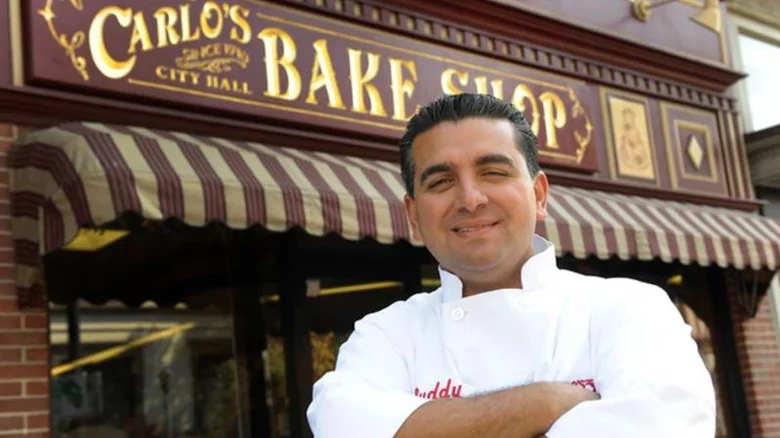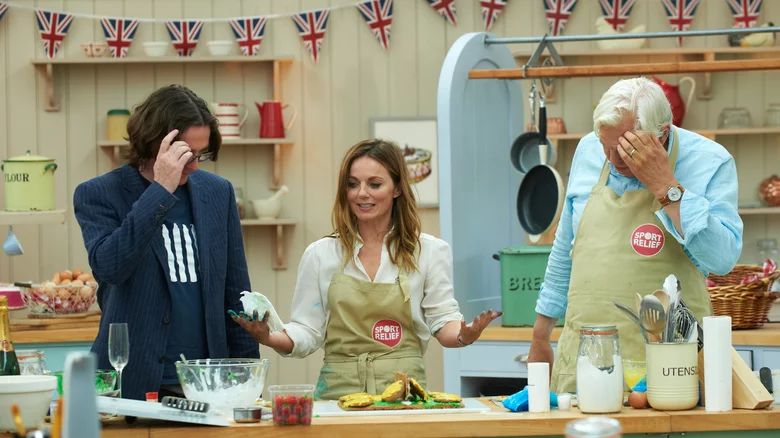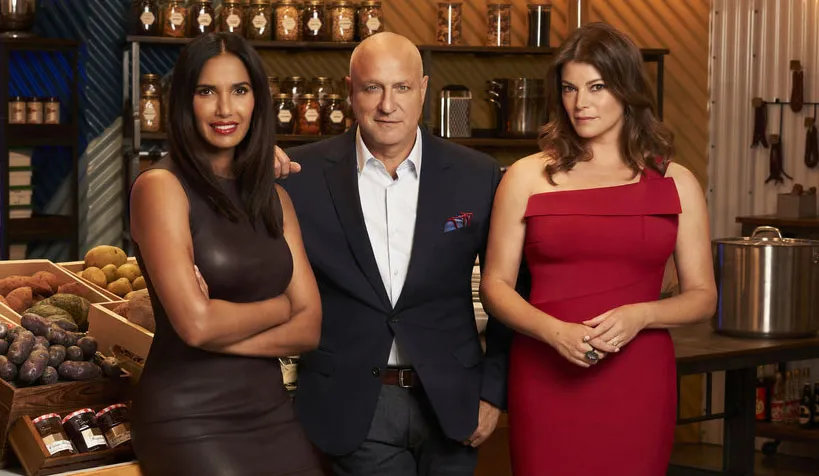Cooking shows, both nationally and internationally, have become immensely popular, captivating audiences with their talented chefs and impressive culinary displays. However, as viewers witness the creation of delectable dishes, they often wonder about the fate of the uneaten food.
The handling of leftovers on cooking shows varies widely depending on the program and the country in which it is filmed. Some shows adopt altruistic approaches, redistributing excess food to crew members, staff, or even donating to food banks. These initiatives help minimize waste and benefit those in need.
However, despite these efforts, food waste remains a significant issue in the industry. Many shows still produce a considerable amount of waste, whether due to stringent health regulations, the nature of the production process, or simply the excessiveness of the culinary creations showcased.
Guy’s Grocery Games
“Guy’s Grocery Games” presents a frenetic race through the aisles of a fully stocked grocery store, with contestants scrambling to gather ingredients for their culinary challenges. Despite the high-speed shopping, the show manages to minimize food waste through thoughtful measures.

Behind the scenes, staff regularly check grocery items for expiration dates, ensuring that any products nearing expiration are still safe for consumption. These items are then donated to food banks, reducing waste and benefiting those in need. Additionally, any leftovers or scraps from the challenges are repurposed, with scraps often sent to a local farm for use as animal feed.
While viewers may be left salivating over the tantalizing creations showcased on the show, they can take comfort in knowing that the food is being utilized responsibly, with minimal waste.
MasterChef US and UK
On Fox’s “MasterChef,” the impressive pantry where contestants select their ingredients isn’t just for show. After filming wraps up, all leftovers and unused pantry items find a new home. Initially, the crew gets the first pick, ensuring that nothing goes to waste. Then, the remaining items are donated to MEND (Meet Each Need with Dignity), a charity in Los Angeles dedicated to supporting the most vulnerable members of the community. MEND has been providing essential services like clothing, furniture, and food assistance since 1971, making it a fitting recipient for the show’s leftovers.

In the UK version of “MasterChef,” the crew’s approach to leftovers is equally commendable. Raw ingredients are distributed among younger crew members, while completed dishes are shared among the filming team. This thoughtful approach ensures that every ingredient and dish is put to good use, leaving nothing wasted.
MasterChef Australia
“MasterChef Australia” stands out for its remarkable commitment to minimizing waste in the world of cooking shows. To ensure that every ingredient finds a purpose, the show implements a thorough process.
First, the crew collectively nominates an Australian charity to receive items from the “MasterChef” pantry. Whatever remains is then donated to SecondBite, an organization dedicated to rescuing surplus food and distributing it to over 1,400 charities across Australia. Since 2013, “MasterChef Australia” has been a proud supporter of SecondBite, contributing to its mission of combating food insecurity.
Even after these generous donations, any remaining waste undergoes composting in a dedicated machine, which in turn enriches the “MasterChef” garden. This holistic approach creates a self-sustaining cycle where nothing goes to waste, showcasing the show’s commitment to environmental responsibility.
Cake Boss
Leftovers can be a contentious issue, as evidenced by an incident involving TLC’s “Cake Boss” in 2014. At a charity event celebrating Wrigley Field’s 100th anniversary, a colossal 400-pound cake crafted by the Cake Boss bakery adorned the venue, depicting the iconic baseball stadium. However, due to concerns about food safety—given that the cake had been on display at a Cubs game earlier in the day before being transported to the event—it was ultimately discarded.

Understandably, the decision to dispose of the cake was a precautionary measure, although it attracted some attention when documented on Reddit by an observer.
Unfortunately, the disposal of leftover food is a common occurrence. With most cooking shows requiring 12 to 14 hours of filming per day, a significant amount of food often remains exposed for longer periods than is deemed safe for consumption.
Chopped
Despite the fast-paced nature of “Chopped,” with its 30-minute timeline and oddball mystery basket ingredients, the reality behind the scenes is quite different. In an interview with Yahoo!, Ted Allen revealed that the show’s energy is sustained over a 12-hour shooting day. Consequently, by the time viewers witness the judges tasting the dishes, they are often cold. However, the judges do sample elements of the dishes immediately after the cooking time ends when they are still hot and fresh.
Unfortunately, the leftovers from the show are discarded after being left out for a while, as filming and editing prioritize high-quality content. Nevertheless, Ted Allen assures fans that despite not eating on camera, he does indulge in bites off-camera.
The Great British Bake Off and Cupcake Wars
In baking shows, the approach to leftovers varies widely. According to BBC Good Food, on “The Great British Bake Off,” contestants are encouraged to enjoy the fruits of their labor, with each baker receiving a “baker’s basket” containing their creations. Any remaining leftovers are typically shared with the crew.

In contrast, in “Cupcake Wars,” the situation is different. Due to the extended periods cupcakes spend at room temperature during filming, there is often more waste generated. While occasionally contestants may be allowed to keep the elaborate fondant decorations for special events or charity purposes, the cake portion usually needs to be remade due to food safety concerns. However, given the artistic nature of some of these creations, the waste is more forgivable.
Top Chef
Dream jobs can come with various perks, but retiring to your hotel after a fulfilling day of production and hosting lavish dinner parties featuring caviar and foie gras might just rival that annual Christmas bonus in terms of greatness. Culinary producers of “Top Chef” may not contribute to charities, but they certainly indulge in exquisite meals. According to host Padma Lakshmi, she typically anticipates a 10-pound weight gain each season due to the abundance of impeccably crafted dishes.

Fortunately, since all the meals showcased on the show are tailored for the judges, there is minimal food waste. Any excess food that remains is typically disposed of only if it spoils during filming. However, after enduring a long day on set, many participants often resort to simple meals like ramen or peanut butter and jelly sandwiches. After all, who wants to cook after such an exhausting day?
The Big Waste
“The Big Waste” on Food Network sheds light on the staggering amount of food waste in America, with stars from shows like “Chopped” and “Iron Chef” showcasing the shocking reality of 37 tons of edible food discarded each year. The show documents their efforts to salvage perfectly good food from stores and restaurants, then competing to create dishes using these rescued ingredients.
This program serves as an eye-opening observation of the excessive waste in our society. However, it also sparks a conversation about the issue on social media, offering hope for a more sustainable future. Many individuals are becoming more mindful of their cooking habits, focusing on preservation, repurposing leftovers, and making the most of what they already have in their kitchens.
The Rachael Ray Show
“The Rachael Ray Show” follows the practice of sharing leftover dishes with its crew, adhering to insurance rules that prevent distribution to the live studio audience. However, the show partners with City Harvest, an organization dedicated to addressing food waste and hunger in New York City. City Harvest rescues excess food and delivers it to those in need, contributing to its mission of providing meals to the 1.5 million hungry individuals in the city. Since 1982, City Harvest has distributed 153 million pounds of rescued food annually to food pantries and soup kitchens throughout New York.

The food system in America presents various perspectives, reflecting shifts from historical “waste not want not” attitudes to contemporary challenges. Fortunately, growing awareness is prompting action, with initiatives like City Harvest demonstrating that food waste is a solvable problem through innovation, resourcefulness, and compassion.



0 Comments